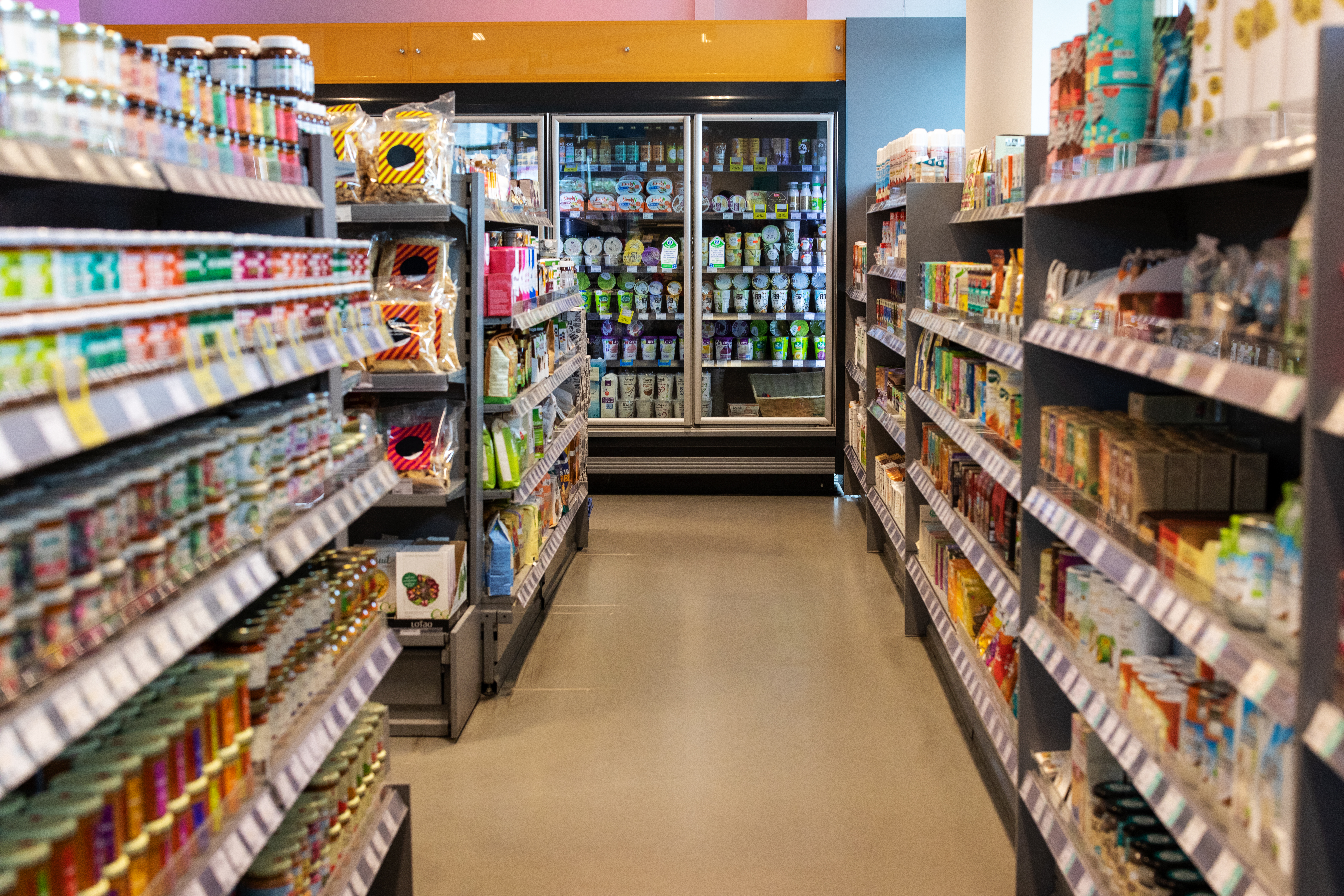What is trade promotion?
A trade promotion is when you market your products to your business partners so that they buy more of them to sell in their stores. Effectively, trade promotion is business to business (B2B) marketing, while consumer promotion is business to consumer (B2C).
One unique aspect of trade promotion is that it benefits businesses and consumers. Common trade promotions include discounts and store displays, which appeal to the end customer, not just the retailer or wholesaler. So, when developing new trade promotion campaigns, you have to keep both demographics in mind.
Why are trade promotions important?
Trade promotion are important because they help brands boost sales of specific products in a particular retailer or region. As a CPG manufacturer, you have to appeal to two distinct groups—consumers and retailers. Promos help build stronger relationships between manufacturers and retailers, giving you a better chance to maintain or gain shelf space and avoid product delisting. It also gives you the opportunity to reach new consumers and build brand awareness.
Different trade promotions and their implications
Fortunately, there are many ways to utilize trade promotion effectiveness to increase your bottom line. You can get creative with these offers and combine them as necessary to strengthen your business model.
Here are four types of trade promotion options:
Deals and discounts
The easiest way to entice retailers is to leverage price and offer your products at a discount. The primary benefit for the retailer is that it can increase its profit margin or extend the deal to customers to build loyalty. However, offering deals and discounts can be a tricky proposition if you don’t attach it to a performance metric.
For example, let’s say that you want to discount beauty goods for a new retailer so that it will sell them in stores. If you just offered them at a discount, there’s no incentive for the retailer to push your products. Instead, you can tie the deal to performance metrics, such as meeting (or exceeding) specific sales targets. This option provides a mutual benefit for both parties.
Exhibitions and trade shows
Because your business relies on retailers and wholesalers, developing strong, long-term relationships with everyone within your network is crucial. One excellent way to do this is through an exhibition or trade show. At the show, salespeople and business owners can meet your team and ask questions in person. A trade show is also ideal for showing off new products with demonstrations and Q&A sessions.
Another advantage of an exhibition or trade show is that you can appeal to a new audience. For example, salespeople and dealers might be more willing to meet and greet at a show instead of a one-on-one sales pitch.
Incentives to sales staff
If your products rely on salespeople, you should focus a lot of your attention on them. Since they’re the ones connecting with customers and driving new business, it pays to incentivize them. There are a couple of ways to do this:
Competition – You can have dealer groups from various markets go head-to-head to see who can sell the most. Top-ranking teams may get prizes or discounts based on their performance. Competitions can be short or long-term, or ongoing, based on your needs.
Individual Incentives – You can reward individual salespeople with high-end items or exclusive discounts.
Demonstrators or brand ambassadors
In-store demonstrations can be an effective method of promoting your products to new and existing customers. Retailers may want to have these demonstrations because they can use them to advertise the store and drive more traffic inside. Brand ambassadors can also help differentiate your products from the competition, which helps both you and the retailer.
How to evaluate promotional effectiveness?
Running a trade promotion can boost your company, but how do you know if it works or not? Unfortunately, over half of all trade promotions result in little to no sales lift, meaning manufacturers are ultimately wasting time and money.
Here are some ways to evaluate whether your actions are having any positive effect:
Studying past promotions
One of the easiest ways to tell if a promotion will do well is to see how your last one performed. If you noticed a sizable lift, then you should be able to expect a similar result again. Conversely, if a past promotion underperformed, you can take this opportunity to see where it went wrong and course correct as necessary.
Defining KPIs
Without key performance indicators (KPIs), how can you be sure that you’re having a positive impact on your bottom line? Before running a new promotion, be sure to know what goals you’re trying to achieve. Also, be specific —are you trying to boost sales for a single item or a product category? Are you hoping to increase your market share in a particular region? Knowing these KPIs helps your team stay focused and is one of the retail analytics best practices you need to understand for the best chance of success.
Looking at granular data
Many variables can affect a trade promotion’s effectiveness. Everything from shelf placement to weather patterns can impact your marketing potential. So, you need to dive deep into your data to see whether any single variable can skew the results. From there, it’s easier to anticipate potential problems and solve them beforehand.
Evaluating incremental sales
Incremental sales are those that result from a single promotion. While it seems obvious to check this data when running a trade promotion, many CPG manufacturers don’t. Looking at these numbers can give you a clear idea of whether your actions are having a positive or negative effect overall.
Metrics used to measure trade promotion effectiveness
Knowing the various methods to evaluate your trade promotions is just the beginning. One of the best ways to ensure you’re able to access accurate metrics is to invest in syndicated data. Let’s see the specific metrics that you can use for measuring trade promotion effectiveness, so you can optimize your CPG trade promotion spend.
POS growth
Point-of-sale systems provide valuable data and insight that can tell you whether your efforts are working or not. Be sure to look at all connected POS units and track elements like promo codes and coupons. You can also compare sales figures to see how much lift occurred because of the promotion. Just make sure you know the differences between POS and panel data.
Consumer units
This metric measures the total number of units sold by product type and category. You can quickly see positive or negative results once your promotion goes into effect.
Incremental ratio
This ratio divides the number of incremental units by the number of total units. Seeing this ratio gives you a quick glimpse into how much business will be lost once your promotion ends.
Primary vs. secondary vs. tertiary sales
Primary sales are often unaffected by trade promotions. However, you can easily see fluctuations in secondary (sales to retail outlets from a distributor) and tertiary (sales to customers) transactions.
ROI by trade promotion
You need to make sure that you’re getting a positive return on your trade promotion investment. Seeing the ROI of specific promotions allows you to plan better for the future and optimize your current marketing methods.

Not all promotions are effective
If you want to ensure that your trade promotion is working, you need lots of data. Fortunately, Byzzer can provide all of this information through comprehensive reports that we build for you. We’ll also develop action plans so that you know what to do with these insights.
With Byzzer’s reporting solutions, you can have all the data you need at your fingertips. Reach out to our team, so we can help you build a customized paid plan with Byzzer. You can have this data and much more available for any need that may come up.




